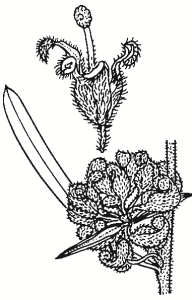Family:
Proteaceae
Grevillea polybractea
Crimson Grevillea
Other Names:
First Nations Name(s):

Name Origin:
Grevillea — after Charles Francis Greville (1749-1809), co-founder of London Horticultural Society.
polybractea — from Greek poly, many, and Latin bractea, bract, referring to many bracts which conceal buds.
Regional Subspecies:
Occurrence:
Regional:
Noted in eastern parts of the region, including the areas: Upper Back- Upper Jerra Jerra; Yarra Yarra; Coreinbob; O’Briens South & McLeods; Upper Kyeamba; Keajura; Upper Burkes; Major; Murraguldrie and Carabost.
Australia:
NSW, Vic.
Habitat:
Dry sclerophyll forest on granite soil.
Habit:
Spreading neat shrub, 30 cm to 1.8 m high, with rough hairy leaves.
Site Preference:
Slightly sheltered areas in well-drained soil. Tolerates open situations in full sun. Moderately frost tolerant.
Characteristics:
Prone to root-rot fungus and quickly dies if infected. Hybridises with Woolly Grevillea (G. lanigera) and Rosemary Grevillea (G. rosmarinifolia).
Flowering:
Red to pink with yellow or green, spring. Dense woolly flowerheads.
Seed Collection:
Summer. Monitor closely, as seeds shed soon after maturity. Secure nylon stockings or paper bags to fruiting branches after flowering to ensure collection.
Propagation:
From cuttings, which strike readily. Can be grafted onto Rosemary Grevillea.
VALUES:
Shade & Shelter:
Useful low-level cover in windbreaks.
Wildlife:
Good habitat.
Ornamental:
Attractive. Interesting well-displayed flowers. Excellent in tubs. Prune from early age to retain low growth. Avoid excess watering.
